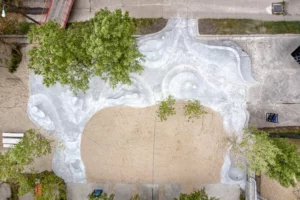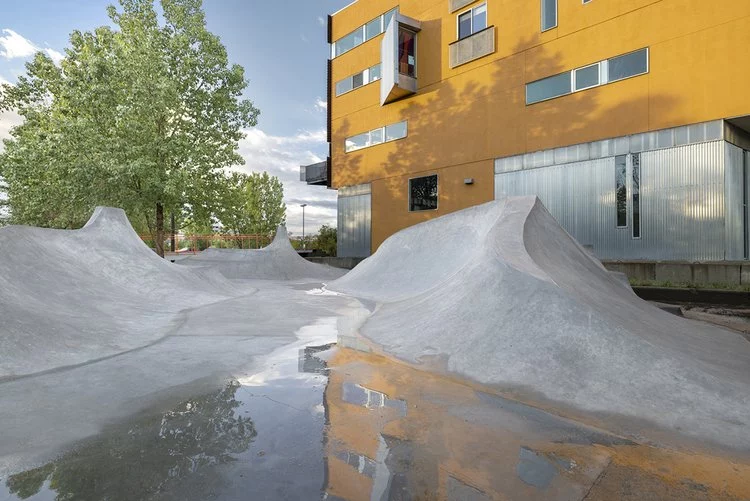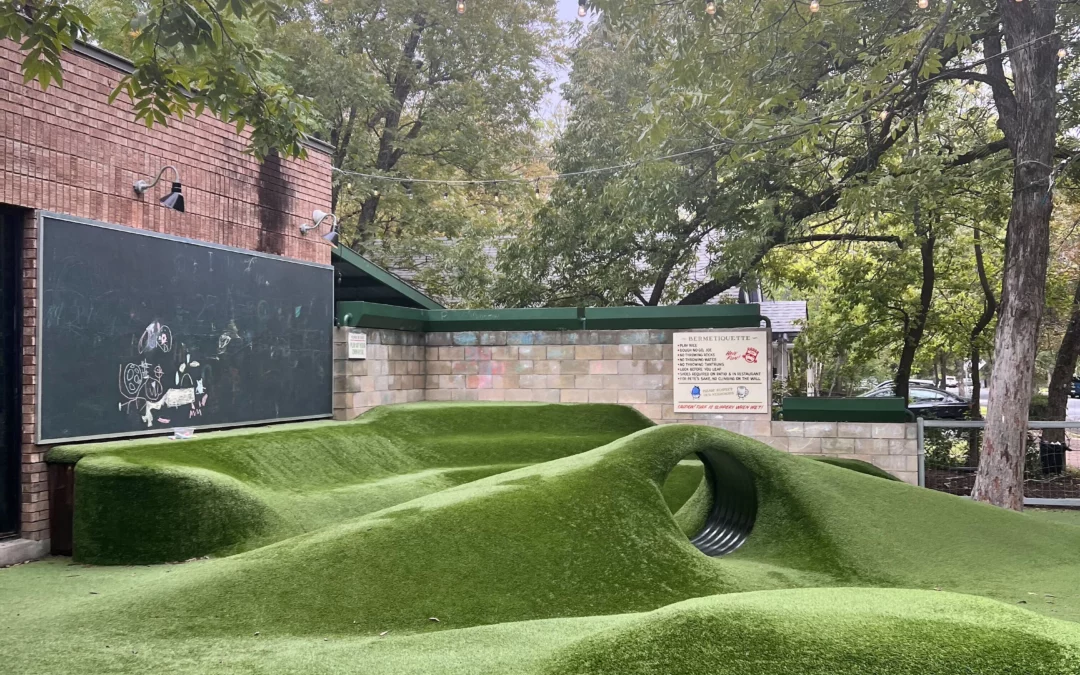TLDR: Utilizing grants, stormwater management programs, and community empowerment can lead to building community green infrastructure that solves drainage problems aesthetically pleasingly.
When it comes to building community green infrastructure, it takes a village for residential stormwater management. Fortunately, green neighborhoods nationwide have successfully implemented green infrastructure (GI) and other stormwater management practices around parks, schools, and homes. While each rain barrel and garden is doing its part to capture and filter stormwater, communities are taking their efforts up a notch when it comes to infrastructure sustainability:
-
Art installations find the intersection of green infrastructure and community building.
-
Updated schoolyards renew students’ excitement for the outdoors while managing neighborhood flood concerns.
-
Neighbors invest in their towns through small and large-scale, collaborative GI projects.
The Intersection of Art and Stormwater Management
Visually appealing and welcoming pedestrian spaces can do wonders for building a community and definable culture. Recreational areas draw people outdoors and create a stronger sense of community-and arguably safety- among residents, but they can also provide benefits beyond that. GI can enhance these spaces with an eye for design, serving the community through multiplied effects.


In Denver, an artist, a nomadic museum, and a nonprofit installed “Community Forms,” a concrete skatepark and stormwater management system. As part of the Federal Emergency Management Agency (FEMA) Region 8 ArtWorks initiative, the structure welcomes recreation and gathering while redirecting water from its neighboring building’s downspout into a vegetated swale. Designed by artist Matt Barton, “Community Forms” took what once was a site of heavy foot traffic and chronic flooding and turned it into a work of art that filters stormwater.
It shows that GI can be more than practical; it can be interactive art, an agent for building community, or all of the above.
Stormwater Schools and Environmental Communities
Adding an element of education to the concept of community green spaces, schools have also implemented GI or given students an engaging, interactive experience with environmental education through outdoor play while addressing community concerns with flooding and surface water runoff responsibility.
A partnership between Milwaukee Metropolitan Sewer District and Green Print Partners provides a grant for enriching schoolyards with GI. These schoolyard projects allow parents, students, and educators to voice their desires for the new schoolyard and engage students for years to come, providing them with outdoor classrooms, beautiful play spaces, and natural learning environments. Green roofs, tree plantings, rain gardens, and stormwater planters offer more than a nice view for recess time. Schoolyards are often large, impervious lots with nothing to absorb rainfall and filter water before it drains into the sewer system. Implementing GI can make a massive difference; according to the U.S. General Services Administration, green roofs can reduce a roof’s stormwater runoff by up to 65%.
Integrating these practices into school buildings and among students’ outdoor spaces introduces them to the innovative stormwater management practices that keep their waterways clean while offering an opportunity for hands-on learning with green infrastructure.
Similarly, Chicago’s Space to Grow, a partnership among Chicago Public Schools, the Chicago Department of Water Management, Healthy Schools, and Openlands, converts schoolyards into hubs for environmental protection and engagement for students, striving to promote ecological literacy and reduce flood risks. At one of Space to Grow’s project sites, the program replaced an elementary school’s cracked pavement with permeable pavement capable of holding up to 130,000 gallons of water. Exciting features for students, such as playgrounds and a track and basketball court that lead rainwater into the surrounding rain gardens, fill that same schoolyard. With just one lot, the school gave its students a safe, fun space for outdoor recreation and learning while doing its part to promote clean water and reduce flood risks for its city.
Stormwater Management Plans
Nationwide, neighbors are gathering to improve their towns through backyard conservation efforts and larger-scale organized efforts to mitigate flooding and protect waterways through their towns, parks, and cities. The West Michigan Environmental Council hosts rain barrel and GI workshops in Grand Rapids. The events teach community members how to turn existing materials into upcycled rain barrels, offering a simple solution to the area’s pollution concerns as the barrels collect rain from residents’ gutters.
Minnesota’s Vadnais Lake Area Water Management Organization provides a “Community Blue” grant, funding stewardship projects and educational efforts. In the past, the grant has funded the planting of rain gardens. This project brought together the efforts of residents in a community group and boasted significant improvements in the drainage of stormwater in the area. The garden is estimated to have reduced stormwater volume by 25,593 cubic feet per year and reduced sediment by 207.83 pounds per year.

Sustainable Community Strategies
GI can address various concerns with flood management and waterway protection, and it does not need to be intimidating. From backyard rain barrels to artistically inspired recreational spaces, there are examples of how communities, organizations, and individuals creatively work innovative GI into their lives.
Rainplan also has seen first-hand experience with community partnerships coming together to solve stormwater runoff. For example, our partnership with the Low Impact Development Center (LID) utilizes grants to plan stormwater solutions for targeted communities requesting help. A curated understanding of how flooding and water runoff are happening within a community is helping to solve localized flooding and property damage issues. We do this both with a master plan defined by LID, but also by creating specific stormwater dashboards for each community where neighbors can implement green infrastructure based on their needs and price points.
Rainplan and Your Community
Interested in getting your community involved? You can contact us at hello@myrainplan.com for more information or read about a PES community here.


